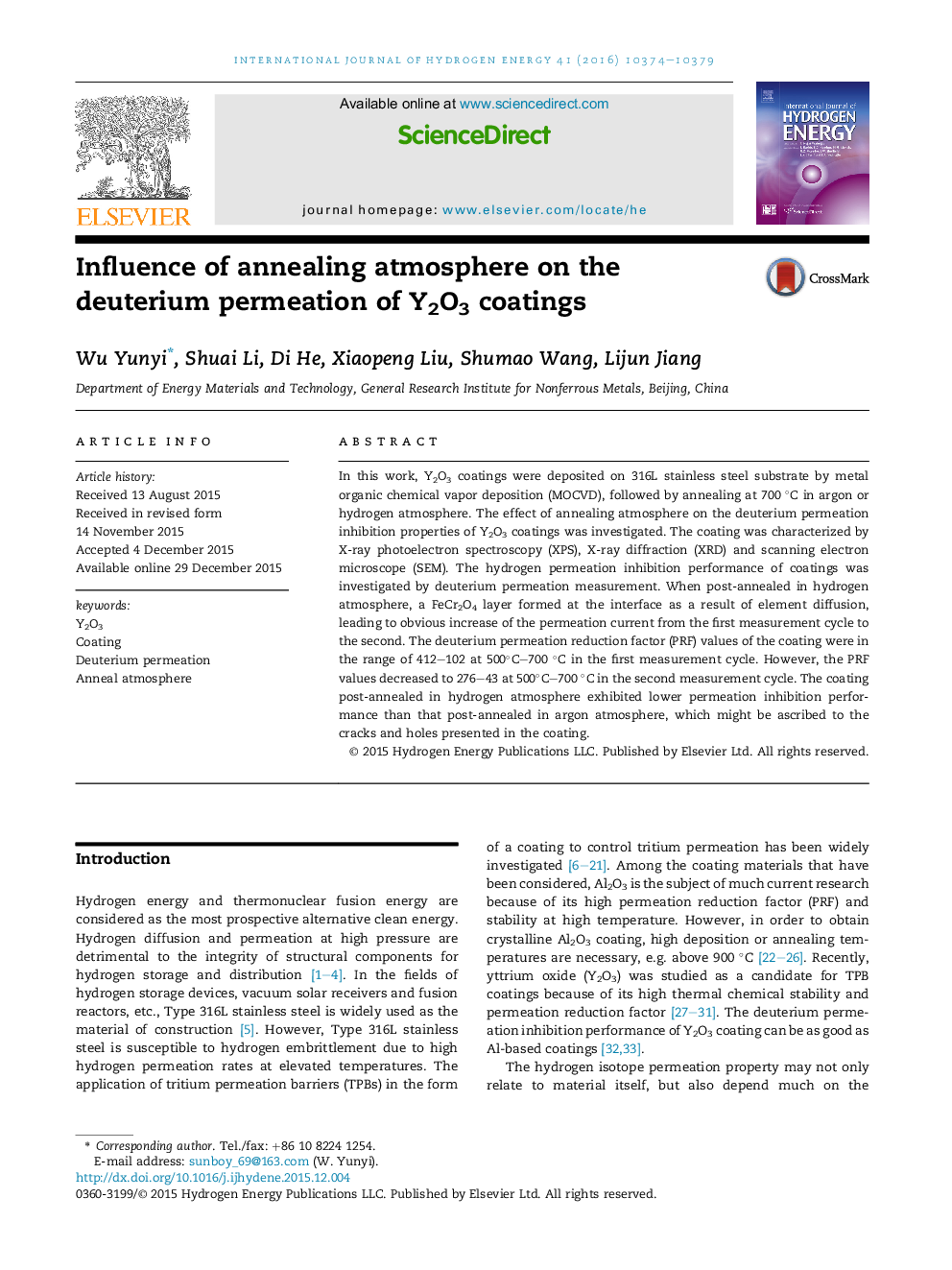| Article ID | Journal | Published Year | Pages | File Type |
|---|---|---|---|---|
| 1269772 | International Journal of Hydrogen Energy | 2016 | 6 Pages |
•Microstructure change was induced by annealing coatings in different atmosphere.•The coating annealed in argon atmosphere exhibited better permeation inhibition property.•A FeCr2O4 layer formed at the interface after annealed in hydrogen atmosphere.•The FeCr2O4 layer led to increase of permeation current in the second measurement cycle.
In this work, Y2O3 coatings were deposited on 316L stainless steel substrate by metal organic chemical vapor deposition (MOCVD), followed by annealing at 700 °C in argon or hydrogen atmosphere. The effect of annealing atmosphere on the deuterium permeation inhibition properties of Y2O3 coatings was investigated. The coating was characterized by X-ray photoelectron spectroscopy (XPS), X-ray diffraction (XRD) and scanning electron microscope (SEM). The hydrogen permeation inhibition performance of coatings was investigated by deuterium permeation measurement. When post-annealed in hydrogen atmosphere, a FeCr2O4 layer formed at the interface as a result of element diffusion, leading to obvious increase of the permeation current from the first measurement cycle to the second. The deuterium permeation reduction factor (PRF) values of the coating were in the range of 412–102 at 500°C–700 °C in the first measurement cycle. However, the PRF values decreased to 276–43 at 500°C–700 °C in the second measurement cycle. The coating post-annealed in hydrogen atmosphere exhibited lower permeation inhibition performance than that post-annealed in argon atmosphere, which might be ascribed to the cracks and holes presented in the coating.
